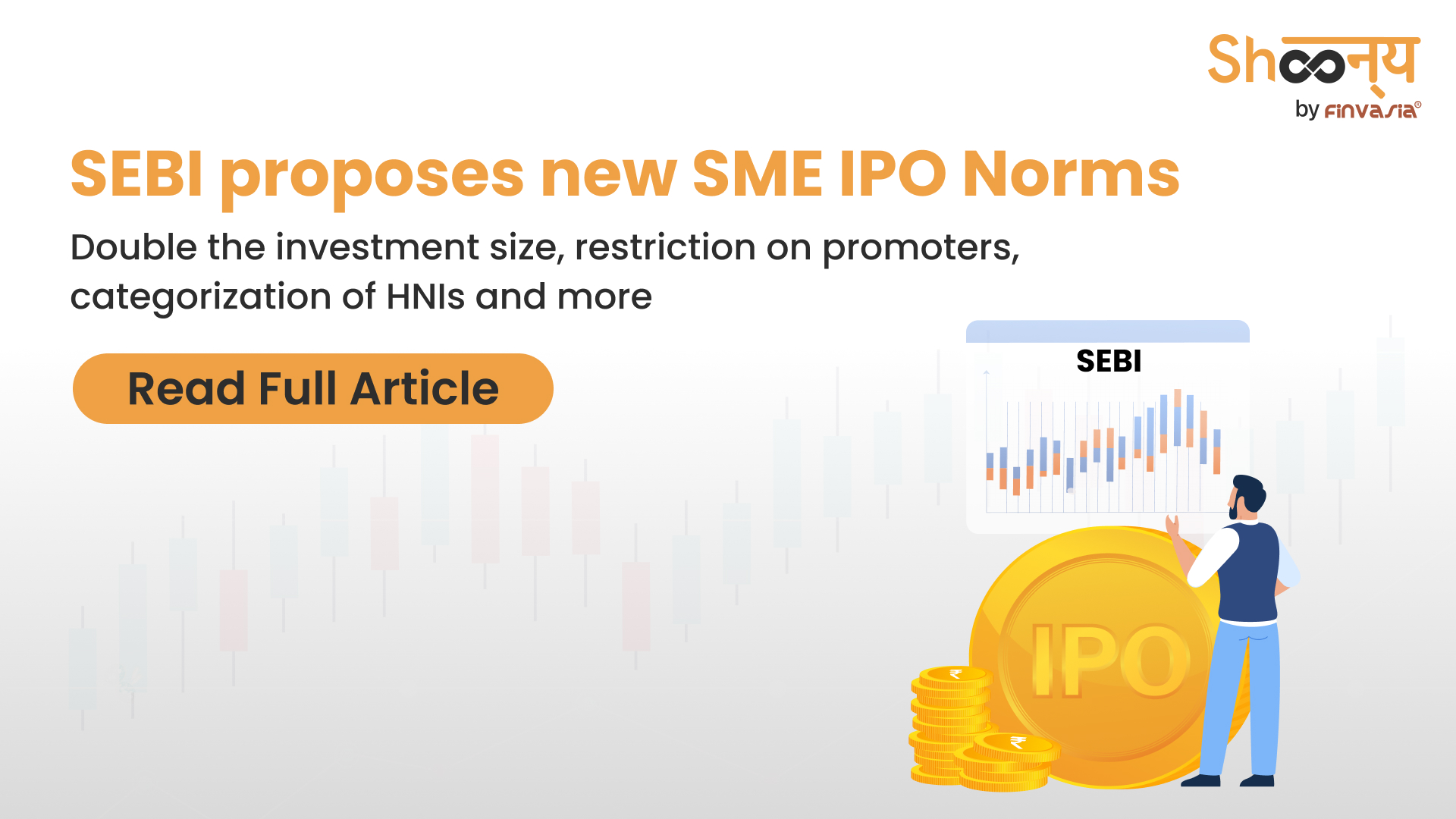SEBI Rules for SME IPOs: 2X application size, tracking of funds, lock-in for promoters, and more

Securities and Exchange Board of India (SEBI) proposed certain changes in the SME IPO space to benefit and reduce the risk for retail investors. The proposed SEBI rules for IPOs for the SME segment have come as suggestions on the basis of the sebi consultation paper submitted by the organization itself. So are these new sebi rules for sme ipos going to be a boon for retail investors or can add more challenges to their investment journey? Let’s find out in this article.
Proposed Rules for SME IPOs by SEBI
- Increased Application Size: The minimum application size for the retail investors in the SME segment has been proposed to be doubled. So, if it is ₹ 1 lakh, then it will be ₹ 2 lakh.
- Dividing HNIs into two categories: SEBI has proposed to classify HNIs into two categories which will be like –
- 1/3 of the allocation for HNIs applying for shares worth up to ₹ 10 lakhs
- 2/3 allotment for HNIs applying for shares worth above ₹ 10 lakhs
Currently, for HNIs in the SME segment IPOs, the allotment is done on a proportional basis to a ‘draw on lots” basis.
- Minimum number of allottees: The minimum number of allottees has to be 200, which is currently at 50.
- Restriction on OFS: The next proposal by SEBI is banning OFS (offer for sale) from SME IPOs, or allowing it up to a maximum of 20% to 25% of the entire issue size.
- Tracking Use of Funds: SEBI has also proposed appointing of monitoring agency to track the use of funds for all IPOs irrespective of the size. In addition, the fresh issue threshold can be brought down to ₹ 20 crore from the current ₹ 100 crore level.
- Lock-in tenure for promoters: SEBI has proposed that promoters should be able to sell only 50% of their stakes after one year of IPO launch, and the remaining 50% after two years.
- General Corporate Purpose: The current allocation for GCP is capped at 25%, which should be brought down to 10% of the issue size with an upper limit of ₹ 10 crore. Furthermore, SEBI suggested that unidentified acquisitions in the draft red herring prospectus not be allowed anymore.
How will retail investors be affected?
The proposed changes in the SME IPO norms by SEBI can have a mixed effect on the retail investors investing in SME IPOs. The increase in the minimum application size by two times can make investing in IPOs difficult for many retail investors, as they have to invest more. The categorization of the HNIs can play as a double-edged sword. However, the other changes proposed are only for the betterment of the retail investors. For instance, tracking of funds of the SME IPOs can help the watchdog SEBI to know whether the company is using the fund for the said objective or not. This will in turn determine the fate of the company and help investors secure their money if the company is into malpractices. The lock-in tenure for the promoters is again to ensure the safety of the investors especially the smaller investors who often fall prey to the promoters selling off stakes right after IPO, which drags the stock price down drastically. Similarly, an increased number of allottees would help increase the liquidity of the stock, and make it more tradable and investible. Finally, capping the GCP fund would leave the company with more funds for business expansion and this can help in the reduction of frauds which many companies do using their IPO proceeds capped under GCB.
Source: CNBC TV18
______________________________________________________________________________________
Disclaimer: Investments in the securities market are subject to market risks; read all the related documents carefully before investing.








